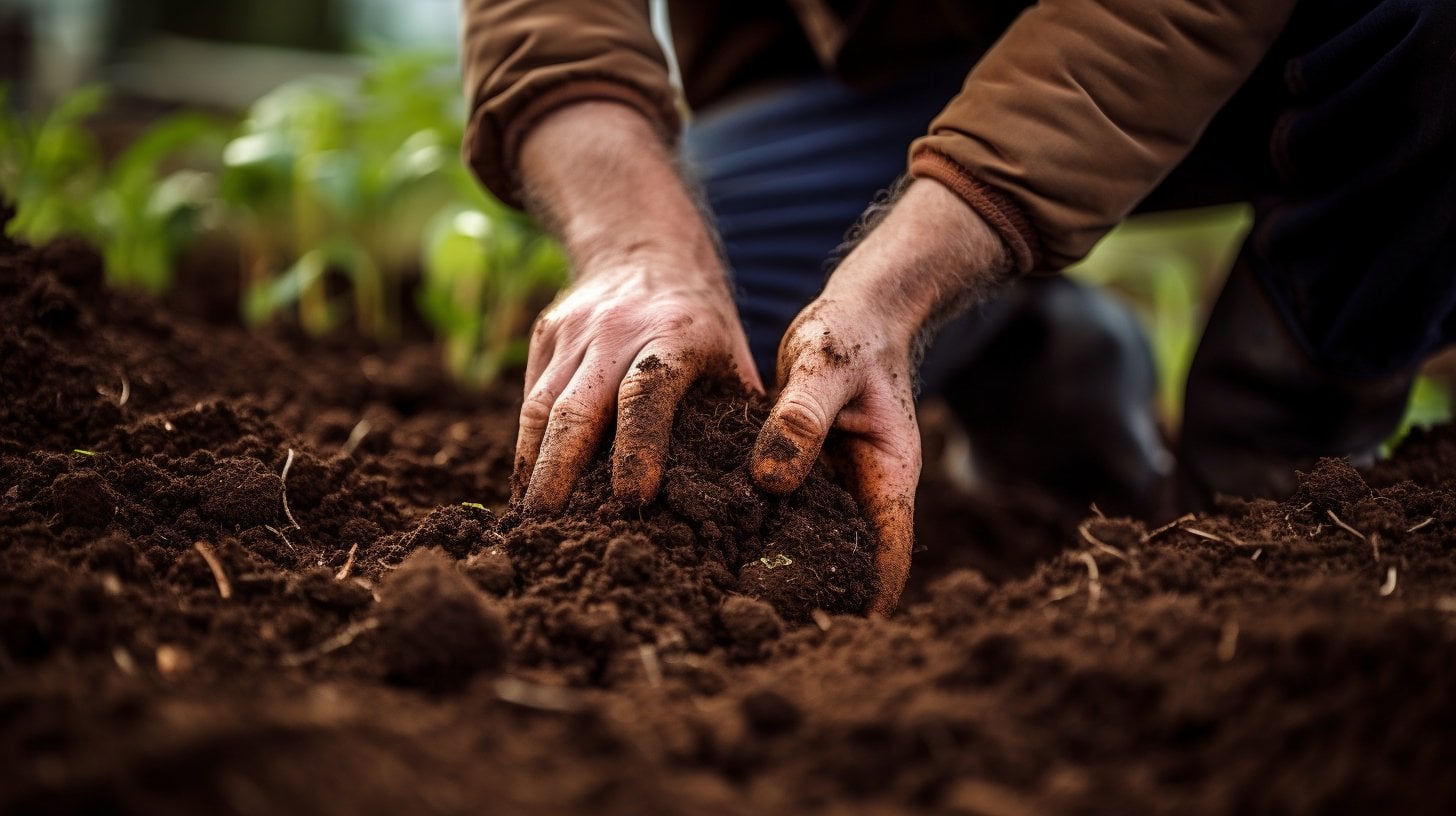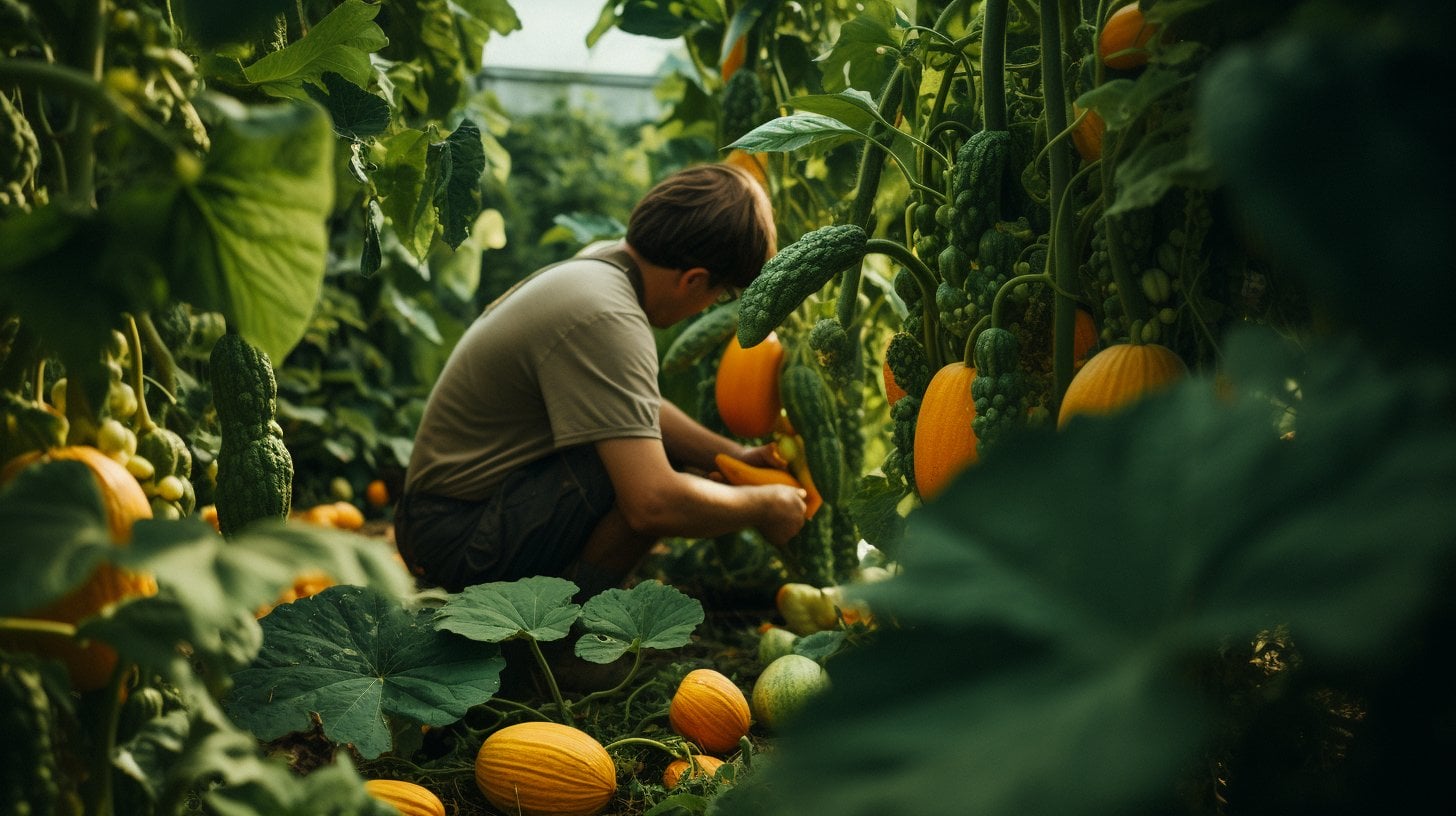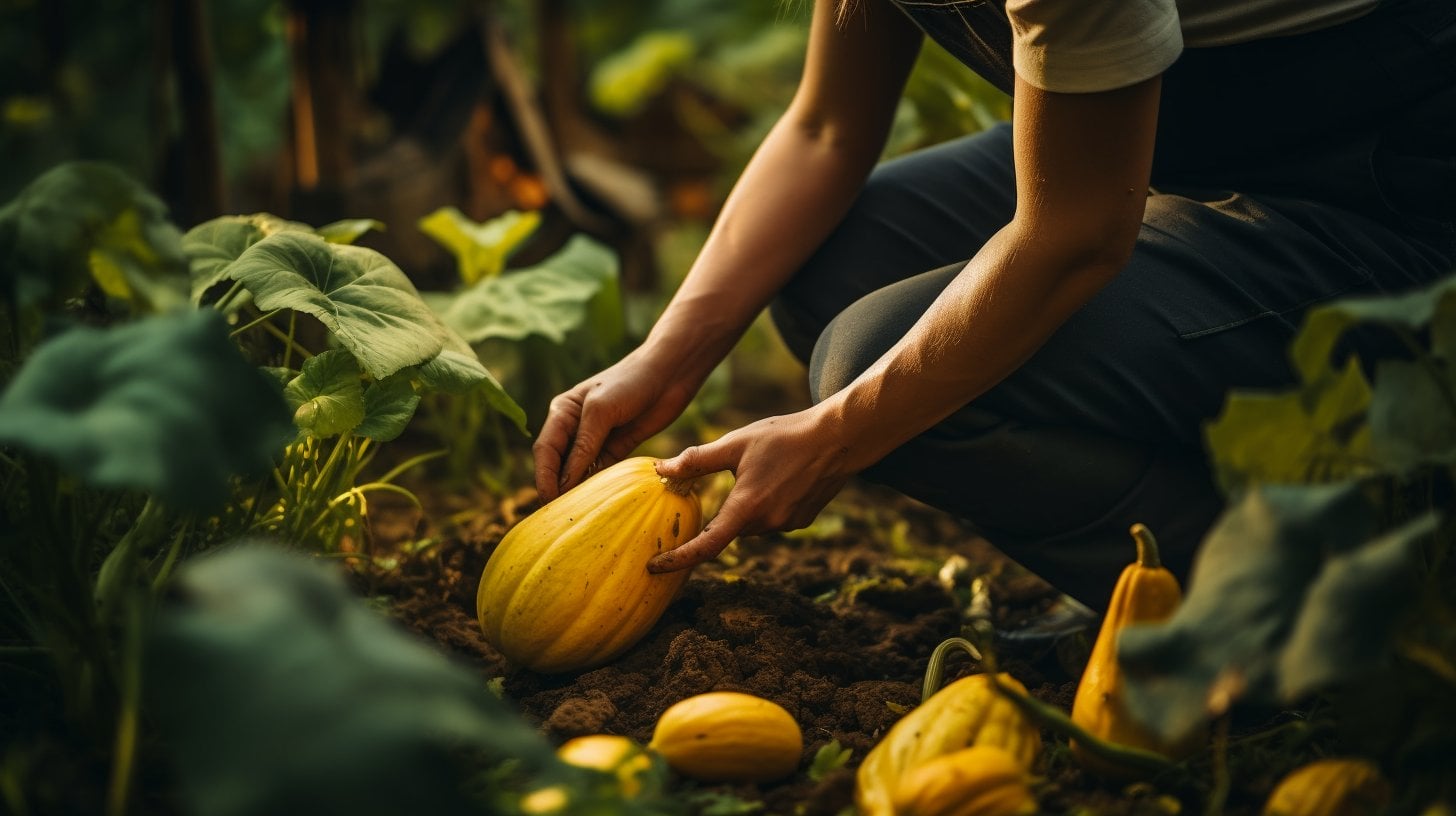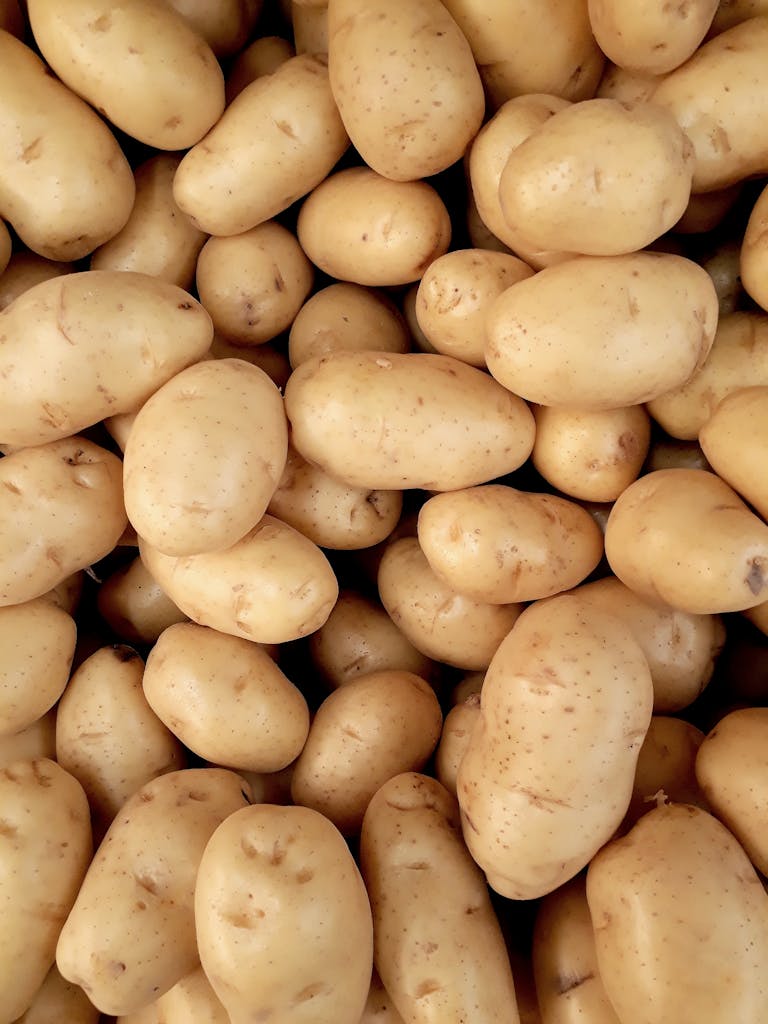How to Plant Spaghetti Squash Seeds: A Step-by-Step Guide
I am excited to reveal the contentment that stems from cultivating your own spaghetti squash. This guide will concentrate on the method of sowing spaghetti squash seeds.
Whether you’re a seasoned gardener or a first-timer, I’ve got you covered.
We’ll explore the uniqueness of this winter squash, discover its ideal growing conditions, learn step-by-step how to plant the seeds and discuss the care needed for a fruitful yield.
Let’s embark on this exciting journey of nurturing and harvesting your spaghetti squash.
Trust me, it’s easier than you’d think!
Key Takeaways
- Spaghetti seeds should be planted in late spring when the soil has warmed up to at least 60 degrees Fahrenheit.
- If the growing season is short, it is recommended to start spaghetti seeds indoors.
- The seeds should be planted at a depth of 1-1.5 inches and covered gently with soil.
- Regular watering is essential for proper germination, and patience is required during growth.
Understanding Spaghetti Squash: A Unique Winter Squash Variety

I’ve always been fascinated by spaghetti squash, a truly unique variety of winter squash. It’s not just its peculiar spaghetti-like strands that intrigue me but also its numerous health benefits.
Now, I’m eager to delve deeper into its defining traits and compare it with other squash types.
Defining Traits of a Spaghetti Squash
It’s essential to recognize that spaghetti squash, known for its yellow, oblong shape, has a unique stringy flesh that separates into spaghetti-like strands when cooked. This defining trait of a spaghetti squash sets it apart from other squash types.
To paint a picture for you, here are three main traits to identify a spaghetti squash plant:
1. The leaves are large, lobed, and dark green, with a fuzzy texture. They’re a crucial indicator when you’re ready to cultivate spaghetti squash.
2. The spaghetti seeds are oval, creamy white, and have a tough outer shell.
3. Finally, the squash is ripe when it turns a deep, solid yellow, providing the best time to sow spaghetti seeds.
Master these traits, and you’ll be an expert in no time!
Health and Nutritional Benefits of Spaghetti Squash
Beyond its distinct characteristics, I’m captivated by this particular veggie’s numerous health and nutritional benefits. Eating spaghetti squash isn’t only tasty and paves the way for a healthier lifestyle. It’s low in calories and high in fiber. Plus, it’s packed with vitamins like A, B, and C, contributing to overall wellness.
Knowing how to cultivate spaghetti seeds has its advantages, too. It’s convenient, cost-effective, and fosters self-sufficiency. Having seeds for planting means you’ll have a fresh supply of this nutritious veggie throughout the season. The process isn’t complicated; in fact, it’s pretty easy. With proper care, you can enjoy spaghetti squash’s health and nutritional benefits right from your own garden.
Exploring Different Squash Varieties
Diving into different squash types, I’m fascinated by the range of flavors, textures, and nutritional profiles each one brings. As I’m exploring, I’m particularly interested in the winter squash family, including the many spaghetti squash varieties.
1. Butternut squash: Rich, sweet, and nutty, this squash is perfect for roasting or pureeing into soups.
2. Acorn squash: Known for its distinct acorn shape, it has a mild flavor that pairs well with both sweet and savory dishes.
3. Spaghetti squash: This variety is unique for its spaghetti-like flesh. You’re in for a treat when cultivating spaghetti seeds, as it’s a healthy, low-carb alternative to pasta.
Each of these types of squash brings something different to the culinary table.
The Right Time and Place: Ideal Conditions for Growing Spaghetti Squash

Now that we’ve covered how to cultivate spaghetti seeds let’s delve into the ideal conditions for their growth.
We’ll discuss the perfect season and timing for planting, what kind of soil and climate the squash thrives in, and the space it needs to grow.
Understanding these factors is crucial to successfully growing spaghetti squash.
Choosing the Perfect Season and Timing for Planting Spaghetti Squash Seeds
I’ve learned that the best time to plant spaghetti seeds is in the late spring when the soil has warmed up to at least 60 degrees Fahrenheit. If your growing season is short, you might want to start seeds indoors around four weeks before the last spring frost.
Here’s how I usually do it:
1. I sow seeds indoors in pots, ensuring each seed is about an inch deep in the soil.
2. I keep the soil consistently moist and warm until the seeds germinate.
3. Once the frost risk has passed, I harden off the seedlings outdoors for a week before planting them in the garden.
This method of growing spaghetti seeds has given me the best results so far.
Identifying Ideal Soil Quality and Climate for Squash Growing
In my gardening experience, it’s crucial to remember that squash thrives best in fertile, well-drained soil rich in organic matter and in areas with plenty of sun exposure. To grow spaghetti seeds successfully, you must get the soil and climate conditions right. It’s not just about growing spaghetti seeds; it’s about creating the ideal environment for them to flourish.
Here’s a table to help you remember these pointers:
| Factor | Ideal Condition | Emotion |
| Soil Quality | Rich, Well-Drained | Excitement |
| Sun Exposure | Plenty | Hope |
| Climate | Warm | Satisfaction |
The Importance of Space: Understanding the Spreading Habit of Spaghetti Squash Vines
Understanding the sprawling habit of these vines is just as important as getting the soil conditions right because they require a lot of space to grow and flourish. When growing spaghetti squash from seed, I’ve found it best to sow the seed indoors first, then transfer the young squash plant outdoors once it’s strong enough.
Here’s a brief rundown of my process:
1. I plant the seeds indoors about three weeks before the last expected frost.
2. After the seedlings develop their first true leaves, I transfer them outdoors. I carefully give each plant enough space – at least 4 feet apart.
3. I then let the spaghetti squash vines do their thing, ensuring they had plenty of room to spread and climb.
how to plant Spaghetti Squash Seeds?

Now that we’ve covered the ideal conditions for growing spaghetti squash let’s dive into the actual planting process.
I will walk you through a step-by-step guide on growing spaghetti squash. This guide includes soil preparation, sowing guidelines, and watering and fertilizing techniques.
Preparing the Soil for Your Squash Plant
I’ve gotta tell you, before planting those spaghetti squash, it’s absolutely essential to prepare the soil properly. If you’re serious about spaghetti squash farming, you can’t just plop your seedlings into any old dirt and expect them to thrive.
Here’s a quick rundown:
1. Test your soil. Squash loves a pH of 6.0-7.0. If you’re not in this range, amend the soil with lime or sulfur.
2. Enrich the soil. Add plenty of compost or well-rotted manure. Squash is a heavy feeder and needs lots of nutrients.
3. Loosen the soil. Spaghetti squash needs loose, well-draining soil to establish a robust root system.
Essential Guidelines for Sowing Spaghetti Squash Seeds
After getting the soil all ready, it’s time to delve into the specifics of sowing those little gems. Planting seeds, especially spaghetti squash, is a delicate task that requires precision.
Planting them at the right depth is crucial to ensure seeds germinate properly. Generally, a depth of 1-1.5 inches is recommended for sowing spaghetti squash. Once you’ve sown the seeds, cover them gently with soil.
Moisture is key for germination, so don’t forget to water the soil regularly. Within a week or two, you’ll see your seeds sprout, a truly rewarding sight. Remember, patience is key here.
Every step requires time and attention, from planting the seeds to seeing them sprout. Now, get ready to marvel at the magic of growth!
Effective Techniques for Watering and Fertilizing Spaghetti Squash Seedlings
Once those little sprouts start showing, it’s all about proper watering and fertilizing to ensure they grow into strong, healthy spaghetti squash seedlings. When you start your seeds, you commit to a nurturing process requiring precision and care. Here are some effective techniques for watering and fertilizing spaghetti squash seedlings:
1. Watering: Maintain a consistent watering schedule. Too much water can drown them, and too little can stunt their growth. The soil should be moist but not soggy.
2. Fertilizing: Use a well-balanced fertilizer. They need a steady supply of nutrients to grow and flourish.
3. Monitoring: Keep an eye on them. Changes in color or shape can indicate watering or fertilizing issues.
Care and Maintenance: Growing Tips for a Healthy Spaghetti Squash Plant

Growing a healthy spaghetti squash plant doesn’t just stop at planting the seeds. I’ve learned from experience that it requires regular care and maintenance.
Let’s dive into some essential tips I’ve gathered on pruning, combating pests and diseases, and the necessary tools for a thriving squash vine.
Regular Pruning: Promoting Strong and Productive Squash Vines
I’ve found that regular pruning really helps in promoting strong and productive squash vines. It enhances plant growth and helps keep pesky squash vine borers at bay.
Here are a few tips on growing spaghetti squash that I’ve picked up:
1. Regularly check your plants for any signs of squash vine borers. They’re a common pest that can seriously damage your vines. If you spot any, remove them immediately.
2. Prune your vines once they’ve set fruit. This will direct more energy towards fruit development and less towards leaf growth.
3. Always prune off any leaves that look unhealthy or diseased. This will prevent any potential spread of disease to the rest of the plant.
Pests and Diseases: Common Problems and Solutions in Squash Growing
Moving on from pruning to another critical aspect of squash growing, let’s tackle pests and diseases.
Unfortunately, these are common problems in squash growing. One of the most notorious culprits? Squash bugs. These pests can quickly turn a thriving plant into an infested one, causing significant damage. But don’t despair; there are solutions.
One of the most effective squash-growing tips I can give you is to regularly inspect plants for bugs and remove them manually. Additionally, using organic pesticides can control the pest population. Maintaining healthy soil and adequate watering is also crucial, as these can prevent many diseases.
Tools and Supplies: Gardening Essentials for Growing Squash from Seed
Switching gears, let’s delve into the necessary tools and supplies to help me grow my garden from seed.
To grow squash, especially its seed, I need to ensure I have the right tools.
1. Planting Containers: Handy for starting seeds outdoors, they maintain the right environment for seed germination.
2. Watering Can: Ensures I can provide the right amount of water per week, which is crucial for squash growth.
3. Garden Hoe: Helpful for preparing the garden bed, a key growing tip for squash.
With these essentials, I’m ready to start my journey of growing its seed.
Yes, it’ll require effort, but I’m confident I can nurture a thriving garden with the right tools and supplies.
What Are the Steps to Growing Lentils at Home?
Growing and harvesting lentils at home requires careful planning and execution. First, choose a suitable location with well-drained soil and ample sunlight. Soak your lentil seeds overnight before planting them about an inch deep. Water regularly and ensure the soil remains moist but not waterlogged. Use organic fertilizers to promote healthy growth. Lentils usually mature in about 90-110 days. Once the plants turn yellow and dry, it’s time to harvest the lentils. Gather the pods and dry them further before removing the seeds. Finally, store the harvested lentils in a cool, dry place for future use.
Harvesting and Storing: Savoring Your Homegrown Spaghetti Squash

Now that we’ve nurtured our spaghetti squash plants, it’s time to reap the rewards.
Knowing when and how to harvest is crucial to savoring our homegrown goodness.
Let’s explore spotting the right signs for picking, the proper harvesting techniques, and how best to store our spaghetti squash for maximum shelf life.
Spot the Signs: When to Pick Spaghetti Squash
I’ve noticed it’s time to pick the spaghetti squash when the color changes from white or green to a deep, solid yellow. This is the first sign to harvest spaghetti squash. Understanding the signs is essential to determine if your squash is ripe and ready to harvest.
Here’s a quick guide to help you spot the signs when to pick spaghetti squash:
1. Color Change: The squash turns a deep, solid yellow from green or white.
2. Skin Hardness: The skin becomes hard and can’t be punctured easily.
3. Stem Dryness: The stem starts to dry out.
If all these signs are present, your spaghetti squash is ripe and ready to be harvested. Don’t wait too long; it might overripe and lose its optimal flavor and texture.
Proper Techniques for Harvesting Your Spaghetti Squash
Using the right techniques when you’re ready to harvest your garden’s bounty is crucial to ensure you’re getting the most out of your hard work. Remember, spaghetti squash is a winter variety, which means it’s harvested late in the season. When you’ve grown squash from seed, it’s even more rewarding to finally reap the fruits of your labor.
Cutting your spaghetti squash off the vine is the first step. Don’t yank or twist it; you could damage the fruit. Instead, use a sharp knife or pruners to cut the stem about an inch from the squash. Be mindful not to cut into the fruit itself, as it can lead to rot.
Congrats! You’ve mastered the proper techniques for harvesting your spaghetti squash.
Storing Spaghetti Squash: Best Practices to Maximize Shelf Life
Once you’ve harvested, you must know how to properly store your bounty to maximize its shelf life. Storing spaghetti squash requires a few specific steps to ensure its longevity. Here are my top three:
1. Curing – Allow the squash to ripen fully in the sun, turning it occasionally for even exposure. This process, known as curing, hardens the skin and prolongs storage life.
2. Location – Store spaghetti squash in a cool, dark place. A high-humidity environment can cause the inside of the squash to become mushy.
3. Inspection – Regularly check your stored squash for signs of spoilage. Discard any with soft spots or mold.
Master these steps; your cured spaghetti squash should last several months.
After mastering the art of growing spaghetti squash seeds, don’t miss out on our guide on how to dry seeds for planting to take your gardening skills to the next level and ensure a self-sustaining garden year after year!
Frequently Asked Questions
Can Spaghetti Squash Seeds Be Saved and Used for the Next Planting Season?
Absolutely, you can save spaghetti seeds for the next planting season. I’ve done it myself. Just ensure they’re completely dry before storing them in a cool, dark place to maintain their viability.
What Are Some Common Pests and Diseases That Affect Spaghetti Squash Plants, and How Can They Be Treated?
Sure, spaghetti squash plants often struggle with pests like squash bugs and diseases like powdery mildew. I combat these by using insecticidal soap and fungicides and maintaining good air circulation spacing.
How Can I Tell if My Spaghetti Squash Plant Is Not Growing Properly?
I can tell if my spaghetti squash plant isn’t growing properly by observing changes in leaf color, stunted growth, and lack of fruit development. These signs might indicate disease, pest infestation, or nutrient deficiencies.
Can Spaghetti Squash Be Grown in Containers or Pots?
Absolutely! I’ve successfully grown spaghetti squash in large containers. It’s crucial to ensure the pot is big enough to support the plant’s growth and there’s adequate drainage to prevent root rot.
What Are the Nutritional Benefits of Eating Spaghetti Squash?
Spaghetti squash is incredibly nutritious. It’s low in calories and packed with vitamins A, C, and B and fiber. It’s a great substitute for pasta, helping you maintain a balanced and healthy diet.
Conclusion
Growing spaghetti squash in your own garden is a rewarding experience. With the right conditions, patience, and proper care, you can enjoy your homegrown spaghetti squash.
Remember, timing is key for planting, and regular maintenance ensures a healthy plant.
Once harvested, store it properly to savor the unique taste of this winter squash.
I assure you, nothing beats the satisfaction of eating spaghetti squash you’ve grown.
Happy gardening!







